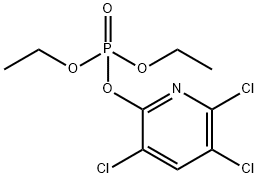基本信息
毒死碑代謝物
氯吡硫磷一氧
CHLORPYRIFOXON
Fospirate-ethyl
Phospyrat ethyl
CHLORPYRIPHOXON
Dursban O-analog
chloropyrifosoxon
CHLORPYRIFOS-OXON
Chloropyrifos oxon
dursbanoxygenanalog
常見問題列表
Treatment of tubulin with 1.5 mM Chlorpyrifos-oxon (CPO) leads to protein aggregation. However, even at 1.5 μM Chlorpyrifos-oxon cross-linked trimers are apparent. Chlorpyrifos-oxon promotes isopeptide bond cross-linking of tubulin monomers to make multimers.
In PC12 cells in culture, 24 hours of exposure to Chlorpyrifos at a concentration 10-fold below the concentration that inhibits AChE activity (3.0 μM) impaired neurite outgrowth while Chlorpyrifos-oxon inhibits neurite outgrowth at 1.0 nM.
Chlorpyrifos-oxon (CPO) is rapidly detoxified by human liver microsomes via CYP-dependent deethylation and dearylation, and by glutathione-S-transferase. In addition, reactions with A-esterases such as paraoxonase 1 (PON 1) or B-esterases such as carboxylesterase and butyrylcholinesterase (BChE) in the liver may rapidly degrade or scavenge Chlorpyrifos-oxon.
Chlorpyrifos-oxon (3 mg/kg, ip; once; wild-type mice) treatment shows the dimensions of microtubules from Chlorpyrifos-oxon-treated mice are about 60% of those from control mice. The microtubules from mice exposed to Chlorpyrifos-oxon have covalently modified amino acids and abnormal structure, suggesting disruption of microtubule function.

